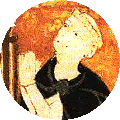
As much as I seem inured to connect John Saul's
Punish The Sinners exclusively with the Supernatural Horror of Howard Philip Lovecraft, I would be skewing the novel's expression of a "
profoundly morbid streak in the [religious fundamentalist] imagination." I have substituted the interpolation "religious fundamentalist" where Lovecraft originally had written "Puritan" - Saul's American small town of Neilsville, after all, is lorded over by an archaic conservative Catholic Theocracy influenced clandestinely by a "cult-like" Religious Order.
This is the original apocalyptic theme of American literature onward from
Charles Brockden Brown's
1798 epistolary
novel
Wieland, or the Transformation.
The militant Order is: the Society of St. Peter the Martyr. Its six members are dedicated exclusively to bringing about a militant Reformation of the
ruling spirit, as well as
moral rapture, harkening to the
medieval Italian Inquisition of the Catholic Church. Of course Monsignor Vernon, the protagonist, Peter Balsam's former best friend, champions the strict Doctrine of this occult tribunal:
But as the questioning continued, each of the priests taking his turn, Balsam realized that they wanted more of him than a simple statement of his knowledge of the beliefs of the Church. They were trying to determine if there were flaws in his faith; if there were areas in which he was not in agreement with the Doctrines.
Suddenly a spirit of
thanatos--or perhaps,
libido--besets Neilsville's dense population of young pubescent teen-agers. Neilsville's Theocratic foundation is jarred by a seemingly random outbreak of attempted suicide, carried out by one of the popular girls at the church school. Then, former bonds of kinship begin to crumble further as the suicidal girl gets back at her
religiously fanatical snooping mother by withdrawing from her, in effect denying her of any psychological catharsis as a parent. And then the Religious Order seeks to excommunicate the suicidal daughter and her family for this grave Mortal Sin from the Catholic Church.
A brief visionary moment is experienced by one meek, devout, and religious student, Marilyn Crane, however, amidst Balsam's controversial psychology class. Marilyn recalls her charged ethereal glimpse
of Mary, the 'Sorrowful Mother' of Jesus with the anti-Semitic Order members standing in the room observing an experimental Relaxation Therapy exercise:
"The priests of the Sanhedrin. The Jews who condemned our Lord. They were here, six of them, and they were watching the Sorrowful Mother. But she wasn't paying any attention to them. She wanted to talk to me. But I don't know why."
See John 18:12-24 for the story identified by Marilyn above.




